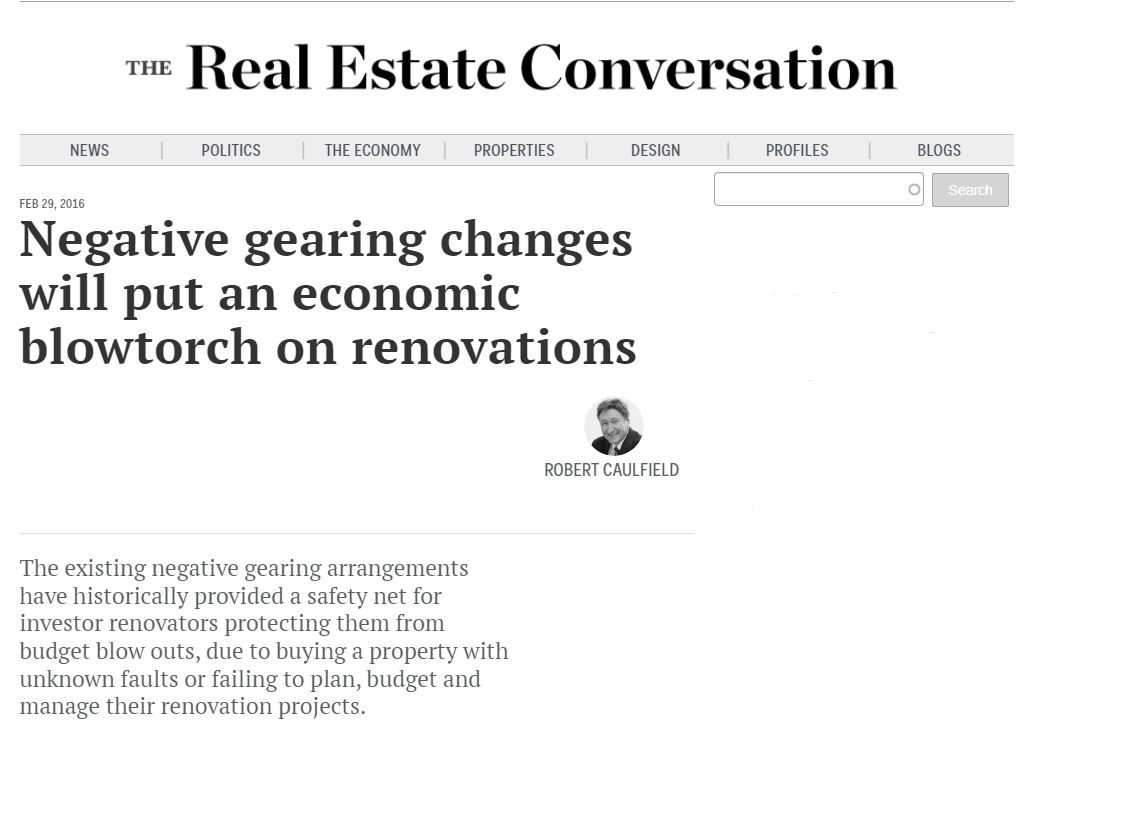
The existing negative gearing arrangements have historically provided a safety net for investor renovators, protecting them from budget blow outs, due to buying a property with unknown faults or failing to plan, budget and manage their renovation projects.
Any decision by political parties to remove negative gearing will put an economic blowtorch on the design and project management of renovation projects, according to Archicentre, the building design and advisory service of the Australian Institute of Architects.
The existing negative gearing arrangements have historically provided a safety net for investor renovators, protecting them from budget blow outs, due to buying a property with unknown faults or failing to plan, budget and manage their renovation projects.
When you build a new home, or renovate an existing one, you invest substantial money, time and energy into what invariably is a complex project. Unfortunately, many homeowners or investors undertaking a renovation project, which can cost on average between $100,000 to $300,000, have no detailed knowledge of what is required or the risks involved in not having a plan to design, cost and manage the project wisely. This can lead to the waste of funds, costly budget blow outs and costly litigation if the project stalls or has major building faults.
Archicentre is often called in when a renovation project is failing, facing major cost blow outs or major structural faults have occurred, situations that could often have been avoided with proper planning in the beginning.
Common Traps for Renovators without a plan of action include:
* Purchasing a ‘renovator delight’ with hidden major structural problems
* Having plans drawn up before deciding on a final design leads to costly variations
* Failing to check builders registration and indemnity insurance
* Undertaking work that does not conform to local council planning controls
* Placing themselves and family at risk with an unsafe renovation site
* Failing to recognise the dangerous presence of asbestos
* Paying up front only to find that work is left half finished
* Having difficulty in co-ordinating trades and materials, which leads to cost blow outs.
Dealing with these common renovator traps, combined with tight management of renovation budgets, will become increasingly important if negative gearing is removed, leaving renovators without the traditional financial buffer.
It is vital to have an independent building expert inspect your building work and assess its quality with reference to matters such as the Australian Building Code, Australian Standards, Local Government overlays, planning procedures, design codes, Development Applications, Occupational Health and Safety, environmental issues, accepted building practice, and to make sure that you are receiving what you have paid for.

